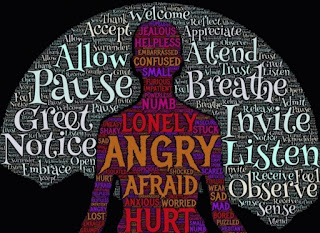I see a love of reading as one of the greatest gifts we can
give our children and students. A person who reads for pleasure will never be
bored. There can always be a magazine, book, or cereal box around for the
moments of downtime. In recent times, parents are more likely to hand a child a
screen rather than a book when there is a need for a distraction. But there is
a much greater benefit when the printed word serves as the time filler during
those unfilled moments.
Research
shows that a habit of regular reading – twenty minutes a day – yields
significant benefits, particularly for preschool and school age children who
are expanding their vocabularies. The
difference between students scoring in the 90th percentile in
reading and the 10th percentile is literally how many minutes a day
that child spends reading. This mastery exceeds by far the vocabulary gain from
any direct vocabulary instruction like a vocabulary workbook.
Creativity and the world of imagination is also enhanced
more through reading than through viewing stories on a screen. When we create
our own pictures in our brains, the imagery if far more developed than that of
seeing someone else’s imagination on a screen. Every good writer was first an
avid reader. The two skills are linked which is supported by a 2005 National Center for Education Statistics study.
Students who read a lot often seek books written at a higher
level that might contain more mature content.
Librarians have long explained that in a book, a child will comprehend
information based on prior experiences. If the child has not cognitive or
experiential basis for a description, he or she will often pass over it
unawares to get to the next adventure. Many adult readers have told me tales of
rereading a book first encountered in middle or high school. With more life experiences, they marvel that
they missed the intent or additional messages aimed at a more mature reader. The same is not true when these stories and scenes are viewed on a screen.
The gift of reading has never been more timely choice. Americans are reading less. The National Endowment for the Arts report To Read or Not to Read (2001) reported the following facts:
The gift of reading has never been more timely choice. Americans are reading less. The National Endowment for the Arts report To Read or Not to Read (2001) reported the following facts:
- Less than one-third of the thirteen-year-olds are daily readers, a 14% decline from twenty years earlier.
- The percentage of thirteen-year-olds who read for fun on a daily basis declined from 35% to 30%, and for seventeen-year-olds the decline was from 33% to 22%.
- On average, Americans ages fifteen to twenty-four spend almost two hours a day watching television, and only seven minutes of their leisure time on reading (that was in 2007- with the increase in the number of smart phones, the amount of screen time has certainly increased).
And the saddest of these findings:
- Nearly half of all Americans ages fifteen to twenty-four do not read books for pleasure.
Turning such trends around can have a significant positive impact on the overall language skills of our youth. Students who engage in free voluntary reading on a regular basis improved test scores in reading comprehension, writing style, vocabulary, spelling, and also have a lifelong gift of entertainment, fascination, and discovery that comes with losing ones' self in the printed word. Let's all give the screen a break for a little while and go enjoy a good book!



